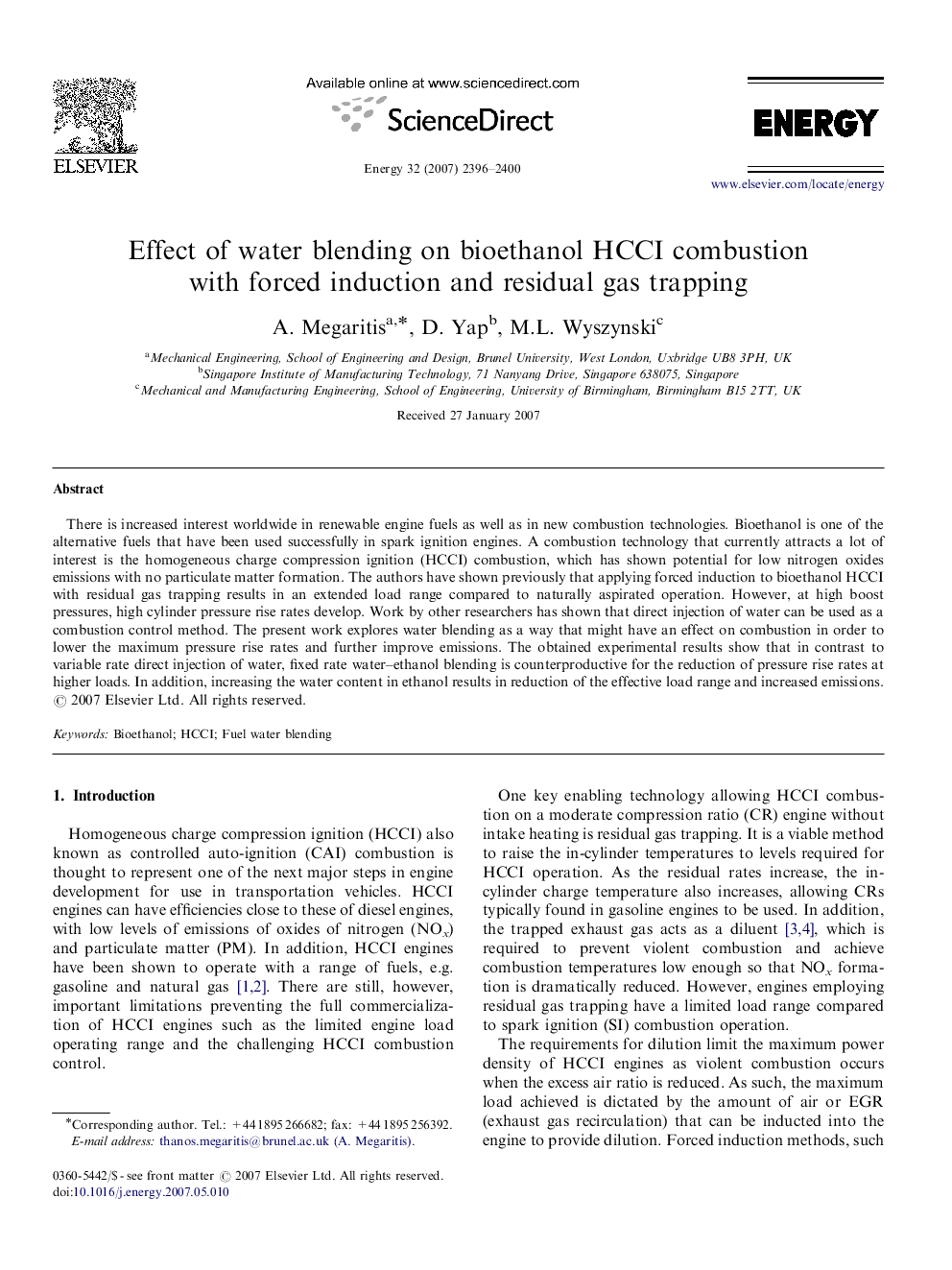| Article ID | Journal | Published Year | Pages | File Type |
|---|---|---|---|---|
| 1735989 | Energy | 2007 | 5 Pages |
There is increased interest worldwide in renewable engine fuels as well as in new combustion technologies. Bioethanol is one of the alternative fuels that have been used successfully in spark ignition engines. A combustion technology that currently attracts a lot of interest is the homogeneous charge compression ignition (HCCI) combustion, which has shown potential for low nitrogen oxides emissions with no particulate matter formation. The authors have shown previously that applying forced induction to bioethanol HCCI with residual gas trapping results in an extended load range compared to naturally aspirated operation. However, at high boost pressures, high cylinder pressure rise rates develop. Work by other researchers has shown that direct injection of water can be used as a combustion control method. The present work explores water blending as a way that might have an effect on combustion in order to lower the maximum pressure rise rates and further improve emissions. The obtained experimental results show that in contrast to variable rate direct injection of water, fixed rate water–ethanol blending is counterproductive for the reduction of pressure rise rates at higher loads. In addition, increasing the water content in ethanol results in reduction of the effective load range and increased emissions.
